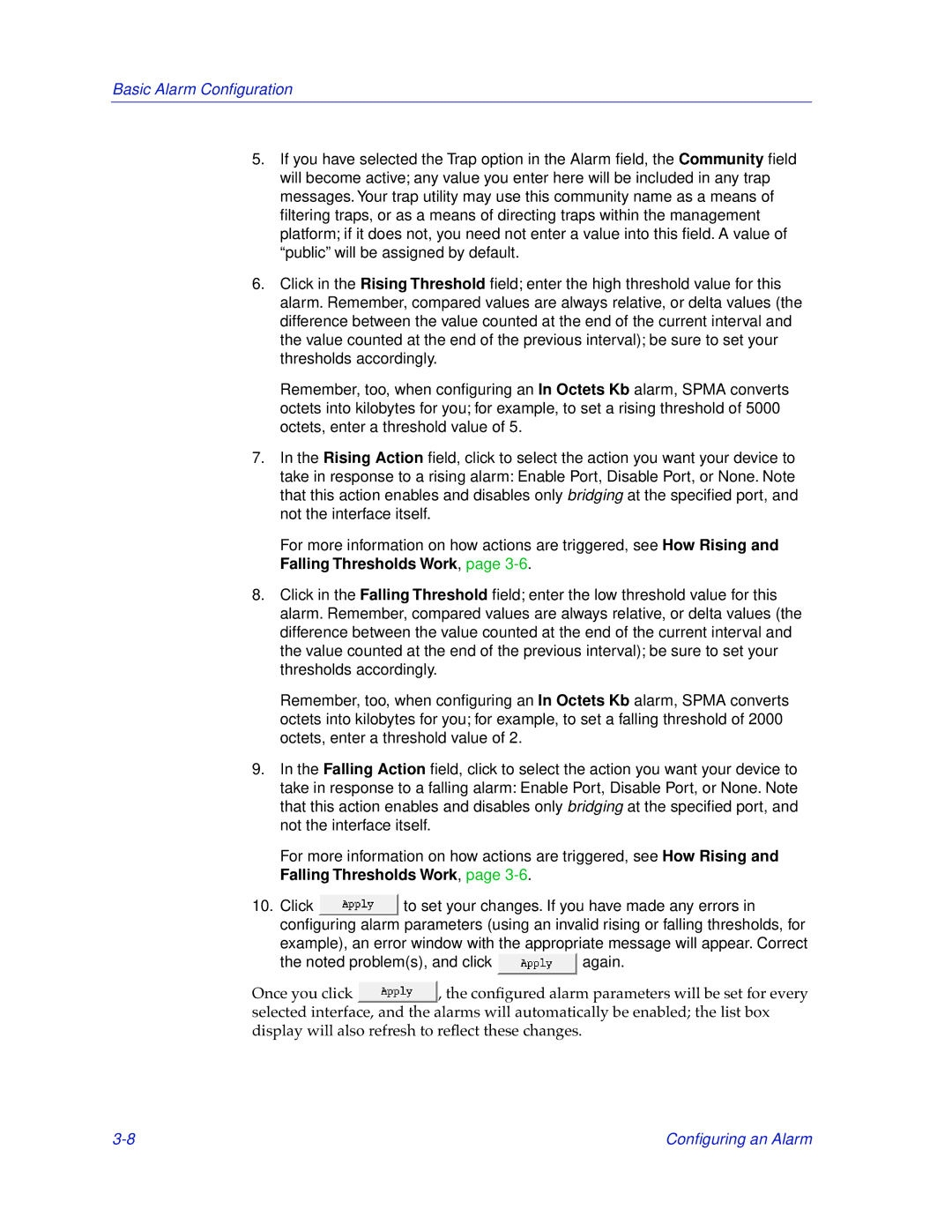Basic Alarm Configuration
5.If you have selected the Trap option in the Alarm field, theCommunity field will become active; any value you enter here will be included in any trap messages. Your trap utility may use this community name as a means of filtering traps, or as a means of directing traps within the management platform; if it does not, you need not enter a value into this field. A value of “public” will be assigned by default.
6.Click in the Rising Threshold field; enter the high threshold value for this alarm. Remember, compared values are always relative, or delta values (the difference between the value counted at the end of the current interval and the value counted at the end of the previous interval); be sure to set your thresholds accordingly.
Remember, too, when configuring anIn Octets Kb alarm, SPMA converts octets into kilobytes for you; for example, to set a rising threshold of 5000 octets, enter a threshold value of 5.
7.In the Rising Action field, click to select the action you want your device to take in response to a rising alarm: Enable Port, Disable Port, or None. Note that this action enables and disables only bridging at the specified port, and not the interface itself.
For more information on how actions are triggered, see How Rising and Falling Thresholds Work, page
8.Click in the Falling Threshold field; enter the low threshold value for this alarm. Remember, compared values are always relative, or delta values (the difference between the value counted at the end of the current interval and the value counted at the end of the previous interval); be sure to set your thresholds accordingly.
Remember, too, when configuring anIn Octets Kb alarm, SPMA converts octets into kilobytes for you; for example, to set a falling threshold of 2000 octets, enter a threshold value of 2.
9.In the Falling Action field, click to select the action you want your device to take in response to a falling alarm: Enable Port, Disable Port, or None. Note that this action enables and disables only bridging at the specified port, and not the interface itself.
For more information on how actions are triggered, see How Rising and Falling Thresholds Work, page
10.Click ![]() to set your changes. If you have made any errors in configuring alarm parameters (using an invalid rising or falling thresholds, for
to set your changes. If you have made any errors in configuring alarm parameters (using an invalid rising or falling thresholds, for
example), an error window with the appropriate message will appear. Correct
the noted problem(s), and click ![]() again.
again.
Once you click ![]() , the configured alarm parameters will be set for every selected interface, and the alarms will automatically be enabled; the list box display will also refresh to reflect these changes.
, the configured alarm parameters will be set for every selected interface, and the alarms will automatically be enabled; the list box display will also refresh to reflect these changes.
Configuring an Alarm |
